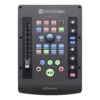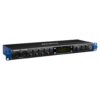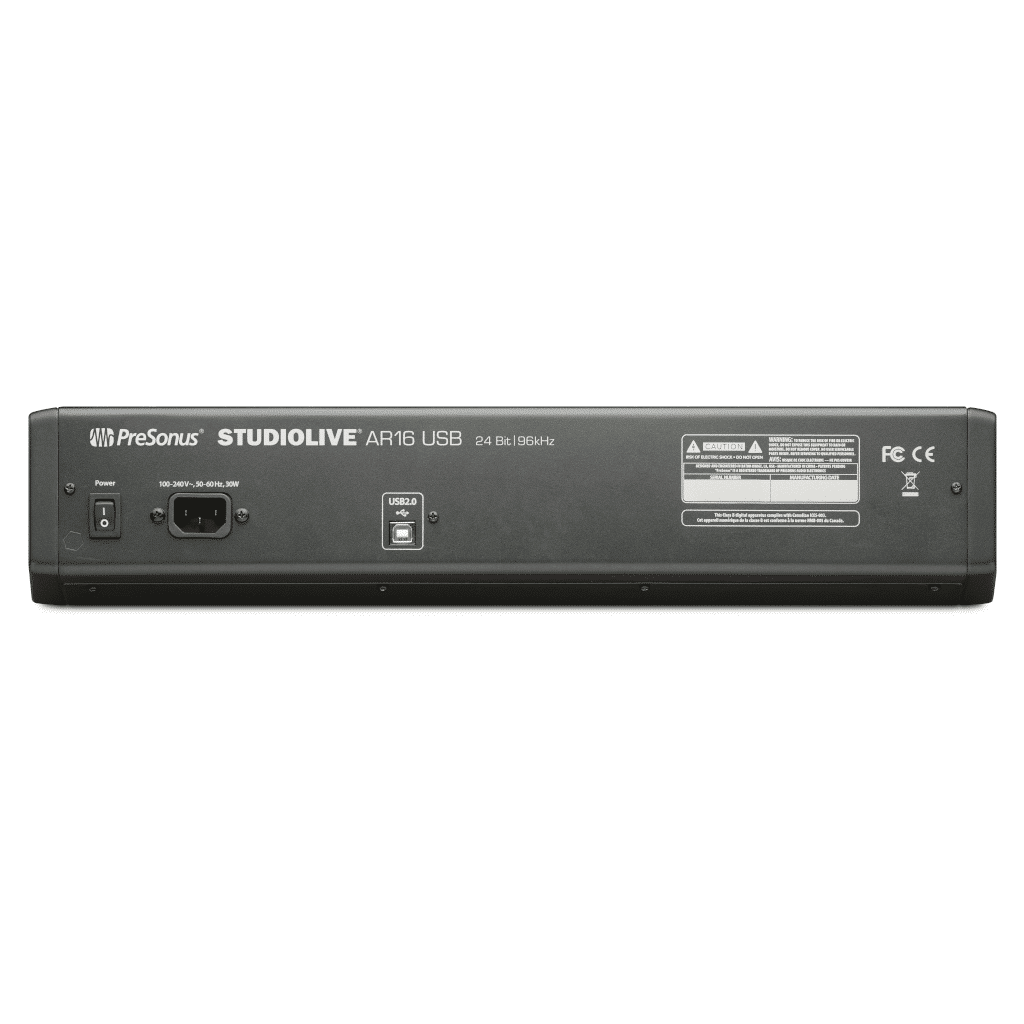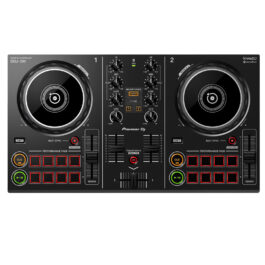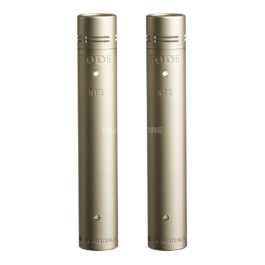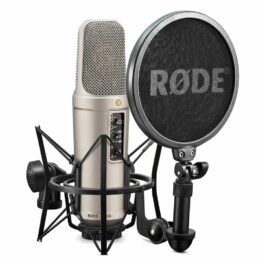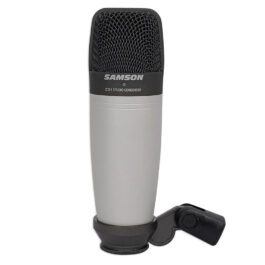PreSonus StudioLive AR16c USB-C 18-Channel Analog/Digital Performance and Recording Mixer
R15,465FREE DELIVERY
Building upon the success of the original AR16-USB, the PreSonus StudioLive AR16c is an 18-channel hybrid performance and recording mixer well suited for a variety of applications including mixing and recording live shows, studio productions, band rehearsals, podcasts, and more!
Out of stock
 Or as low as R3,866 / month interest-free, using your existing credit card. For orders over R1,000.How it works
Or as low as R3,866 / month interest-free, using your existing credit card. For orders over R1,000.How it worksDescription
Built by musicians, for musicians.
StudioLive® AR16 USB 18-channel hybrid mixers make it simple to mix and record live shows, studio productions, band rehearsals, podcasts, and much more. This is a musician’s mixer: lightweight, versatile, feature-rich, and packed with analog connections and digital tools, yet easy to learn and use. Mix with PreSonus’® famous Class A preamps and three-band EQ. Create multitrack recordings and fly in backing tracks with a 24-bit, 96 kHz, USB 2.0 digital audio interface. Record and playback in stereo with the integrated SD™ digital recorder. Stream program music wirelessly, using onboard Bluetooth® connectivity. Compact and road-ready, StudioLive AR mixers provide a superior all-in-one solution for mixing and recording your performances.
All of the connections and controls you need.
StudioLive AR16 USB mixers are packed with the connections and controls needed to mix and record live, in the studio, and in rehearsal. Each of the eight mono channels and four stereo channels includes a 60 mm fader for level control; a mic input with one of PreSonus’ prized Class A preamps; three-band EQ; and more. Besides the main outputs, you get two monitor mix outputs, each with a dedicate bus, for feeding stage wedges, a headphone amp, or an in-ear system. Since the StudioLive AR16 USB is also a studio mixer, you also get control-room outputs with level control to feed your studio monitors.
Plug guitars and basses directly into the mixer.
Most mixers make you route acoustic and electric guitars and basses through external direct boxes before connecting to a mixer input. But with StudioLive AR mixers, Channels 1 and 2 have high-impedance instrument inputs, so you can plug a guitar or electric bass straight into the board—no direct box needed.
It’s inputs; it’s playback; it’s the Super Channel!
Our unique Super Channel (stereo Channel 17/18) allows you to connect four stereo analog and digital sources at once, enabling you to use the mixer with your high-tech devices. Plug a media player into the Super Channel’s unbalanced RCA and 1/8-inch stereo inputs, play stereo audio from the onboard SD™ recorder or from your USB-connected Mac® or Windows® PC. Use onboard Bluetooth 4.1 to pair your phone to your StudioLive AR mixer and instantly have wireless access to your music library for break music, backing tracks, or ear-training. Have a song you want the rest of the band to learn? Pair your phone and start rehearsing!
Record in the studio or at the gig—with or without a computer.
Naturally, you want to record your gigs, as well as producing studio projects, podcasts, and so on. It’s smart to record your rehearsals, too. So StudioLive AR mixers offer two different ways to record. Connect a StudioLive AR16 USB mixer to your computer via USB 2.0, and you have an 18×4 multitrack digital recorder, ready to capture all input channels plus the main mix to a Mac or Windows PC with professional, 24-bit/96 kHz quality. An onboard stereo SD recorder lets you record the main mix without a computer—just hit Record and go. Recording can’t get much easier than this!
Fly in backing tracks and play break music, too!
Both the integrated USB recording interface and the SD recorder have multiple uses beyond simply recording. With just a few backing tracks, your small band can sound like a much larger act, so we enabled the USB interface to play back two stereo streams through the mixer—great for backing tracks, click tracks, or program music. Use the SD recorder to play up to 32 GB of MP3 and .WAV files for hours of program music or backing tracks without needing a computer. And don’t forget the Bluetooth feature in the Super Channel, which lets you play break music straight from your smartphone. With several ways to get the job done, you can work the way you want to.
Integrated software makes recording a snap.
PreSonus StudioLive AR mixers are tightly integrated with state-of-the-art recording software to help you achieve your creative vision. Record with PreSonus’ Capture™ live-recording software, then edit in our award-winning Studio One® Artist DAW (recording and production software); both are included free.
Sweeten with digital effects for a polished, professional-caliber sound.
To get a great mix, you need high-quality effects. The StudioLive AR16 USB has you covered with an internal stereo effects processor with 16 presets, including an assortment of room, hall, and plate reverbs; chorus and delay effects; even a preset that emulates an acoustically treated studio room to provide a warmer, more intimate tone. A dedicated effects return, complete with master level fader and dedicated monitor sends, lets you adjust the amount of the effects in your main and monitor mixes. You can even bypass the effects with a footswitch (optional). It’s just another way that StudioLive AR mixers enable you to build professional-quality mixes and recordings quickly and easily.
Features
- 8 Mono & 4 Stereo Channels
- Stereo Super Channel
- 18×4 24-Bit / 96 kHz USB Audio Interface
- Built-In 2×2 SD Recorder
- 12 XMAX-L Microphone Preamps
- Two Instrument Inputs
- 3-Band EQ & Wireless Bluetooth Streaming
- Capture & Studio One Software Included
- Studio Magic Plug-In Suite Included
- Rackmount Kit Included
Specifications
| Computer System Requirements | Mac Mac OS X 10.11 or Higher (64-Bit Only) Intel Core 2 Duo Processor (Intel Core i3 or Faster Recommended)Windows Windows 7 x64 SP1 +Platform Update, 8.1 x64, 10 x64 Intel Core 2 Duo or AMD Athlon X2 Processor (Intel Core i3 or AMD Athlon X4 or Faster Recommended) Mac and Windows Systems |
| Microphone Preamplifier | Type: XLR Female, Class-A Maximum Input Level (Unity Gain): +22 dBu, ±1.0 dB Gain Control Range Mono Channels: 50 dB, ±1 dB (Unity to +50 dB) Stereo Channels: 40 dB, ± 1 dB (+5 to +45 dB) Frequency Response to Analog Outputs: 20 Hz to 20 kHz, +0.5/-1.5 dB Frequency Response to USB (Direct): 20 Hz to 40 kHz, +0.5/- 1.5 dB S/N Ratio to Outputs (+4 dBu): 94 dB THD+N (min. gain, A-wtd): < 0.01% Input Impedance: 1 kOhms EIN (+55 dB gain, 150 Ohms Input, 20 Hz to 22 kHz, A-wtd): <128 dBu Common Mode Rejection Ratio (1 kHz, +55 dB gain): 65 dB Phantom Power: +48V, ±3V, GlobalNote: All Channel Inputs Sum Through Mic Preamp |
| Instrument Inputs | Type: ¼” / 6.35 mm TS Female, Unbalanced, Hi-Z Maximum Input Level (Min. Gain, 1 kHz at 0.5% THD+N): +22 dBu, ±1.0 dB Gain Control Range: 50 dB, ±1 dB (Unity to +50 dB) Frequency Response to Analog Outputs: 20 Hz to 20 kHz, +0.5/-1.5 dB Frequency Response to USB (Direct): 20 Hz to 40 kHz, +0.5/-1.5 dB Dynamic Range (Min. Gain, A-wtd): >105 dB Dynamic Range (Mid. Gain, Unwtd): >100 dB THD+N (1 kHz, -1 dBFS, A-Wtd): <0.01% THD+N (1 kHz, -1 dBFS, Unwtd): <0.01% Input Impedance: >1 Megohm |
| Line Inputs | Type: ¼” / 6.35 mm TRS female, Balanced Maximum Input Level (min. gain, 1 [email protected]% THD+N): +22 dBu, ±1.0 dB Gain Control Range Mono Channels: 50 dB, ±1 dB (-20 to +30 dB) Stereo Channel: 50 dB, ±1 dB (-15 to +25 dB) Frequency Response to Analog Outputs: 20 Hz to 20 kHz, +0.5/-1.5 dB Frequency Response to USB (Direct): 10 Hz to 40 kHz, +0.5/-1.5 dB S/N Ratio to Analog Outputs (+4 dBu): 94 dB THD+N (1 kHz, -1 dBFS, A-wtd): <0.01% Input Impedance (Balanced): 10 Kilohms |
| Outputs | Type (Main Outputs): XLR Male, Impedance Balanced Type (Control Room, Monitor, FX Outputs): ¼” / 6.35 mm TRS female, Balanced Rated Output Level (Main Outputs): +24 dBu, ±1.0 dB Rated Outputs Level (Control Room, Monitor, FX Outputs): +18 dBu Frequency Response: 20 Hz to 20 kHz, +0.5/-1.5 dB Dynamic Range (A-wtd): >108 dB THD+N (Bandwidth 20 Hz to 20 kHz, -1 dBFS, unwtd): <0.01% Output Impedance: 100 Ohms |
| Headphone Output | Type: ¼” / 6.35 mm TRS Female, Stereo, Unbalanced Maximum Output Level: 150 mW/channel at 60 Ohms Frequency Response: 20 Hz to 20 kHz, +0.5/-1.5 dB Dynamic Range (A-wtd): >103 dB THD+N (Bandwidth 20 Hz to 20 kHz, -1 dBFS, Unwtd): <0.01% |
| Crosstalk | Input to Output (Ref = +4 dBu, 20 Hz to 20 kHz, Unwtd): -85 dBu Adjacent Channels (Ref = +4 dBu, 20 Hz to 20 kHz, Unwtd): -80 dBu |
| Signal Level LEDs | Signal: -50 dBFS (Pre-EQ) Clip: -3.0 dB Before Clip (Pre EQ or Post EQ) |
| Graphic Equalizer | Low Cut: 100 Hz, -18 dB/Octave High Shelving: ±15 dB @ 12 kHz Mid Peaking (Mono Channels): ±15 dB @ 140 Hz to 3.5 kHz (Variable) Mid Peaking (Stereo Channels): ±15 dB @ 2.5 kHz Mid-Band Q: Fixed, 0.55 Low Shelving: ±15 dB @ 80 Hz |
| Digital Audio | Host Interface: USB 2.0 ADC Dynamic Range (Component): 114 dB ADC Dynamic Range (Measured: A-Wtd, 48 kHz): 105 dB DAC Dynamic Range (Component): 114 dB DAC Dynamic Range (Measured: A-Wtd, 48 kHz): 105 dB Bit Depth: 24 bits Internally Supported Sample Rates: 44.1, 48, 88.2, 96 kHz Jitter: <80 ps RMS (20 Hz to 20 kHz) Jitter Attenuation: >60 dB (1 ns In => 1 ps Out) |
| Recorder | SD Recorder Supported Media Format: FAT16 formatted SD card, FAT32 formatted SDHC card Media Storage Capacity: SD card: 2 GB; SDHC card: 32 GB Recording File Format: Stereo WAV Playback File Formats: Stereo WAV, MP3 Sampling Rate (WAV): 44.1 kHz Bit Depth (Recorded WAV): 24-Bit |
| Dimensions | 3.7 x 20.0 x 15.4″ / 9.4 x 50.8 x 39.1 cm |
| Weight | Not specified by manufacturer |
You may also like…
-
- DJ & Beat Production, DJ Controllers
Roland DJ-505 DJ Controller
- R14,400FREE DELIVERY
- Select options
-
- DJ & Beat Production, DJ Controllers
Roland DJ-202 DJ Controller
- R6,400FREE DELIVERY
- Select options


